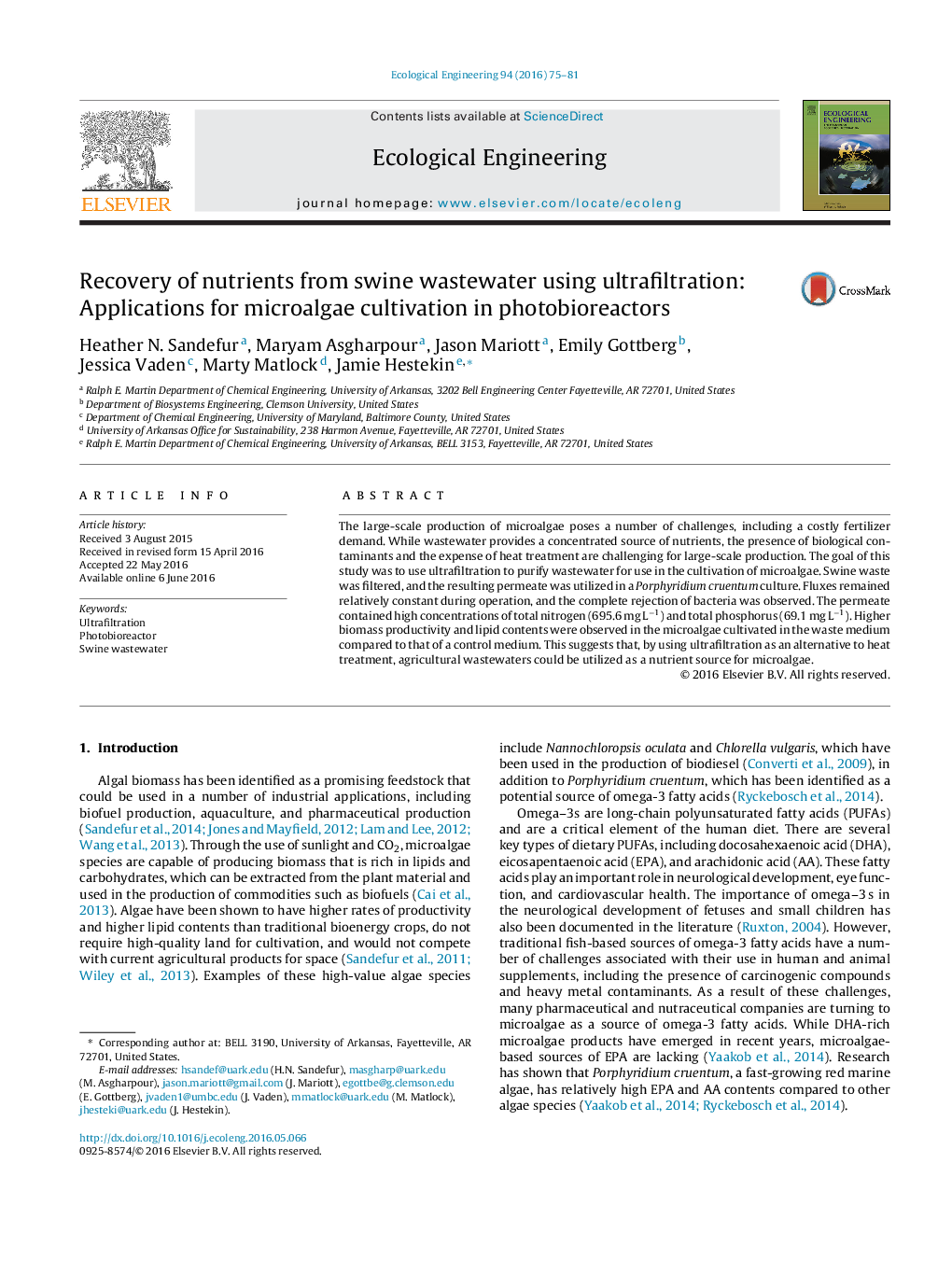| Article ID | Journal | Published Year | Pages | File Type |
|---|---|---|---|---|
| 4388533 | Ecological Engineering | 2016 | 7 Pages |
•We used wastewater as a nutrient source for microalgae cultivation.•The wastewater was purified using ultrafiltration technology.•There was little membrane fouling and the complete rejection of bacteria was observed.•Higher productivities were observed in the microalgae cultivated with the waste medium.•The results suggest that ultrafiltration could be a viable alternative to heat treatment.
The large-scale production of microalgae poses a number of challenges, including a costly fertilizer demand. While wastewater provides a concentrated source of nutrients, the presence of biological contaminants and the expense of heat treatment are challenging for large-scale production. The goal of this study was to use ultrafiltration to purify wastewater for use in the cultivation of microalgae. Swine waste was filtered, and the resulting permeate was utilized in a Porphyridium cruentum culture. Fluxes remained relatively constant during operation, and the complete rejection of bacteria was observed. The permeate contained high concentrations of total nitrogen (695.6 mg L−1) and total phosphorus (69.1 mg L−1). Higher biomass productivity and lipid contents were observed in the microalgae cultivated in the waste medium compared to that of a control medium. This suggests that, by using ultrafiltration as an alternative to heat treatment, agricultural wastewaters could be utilized as a nutrient source for microalgae.
